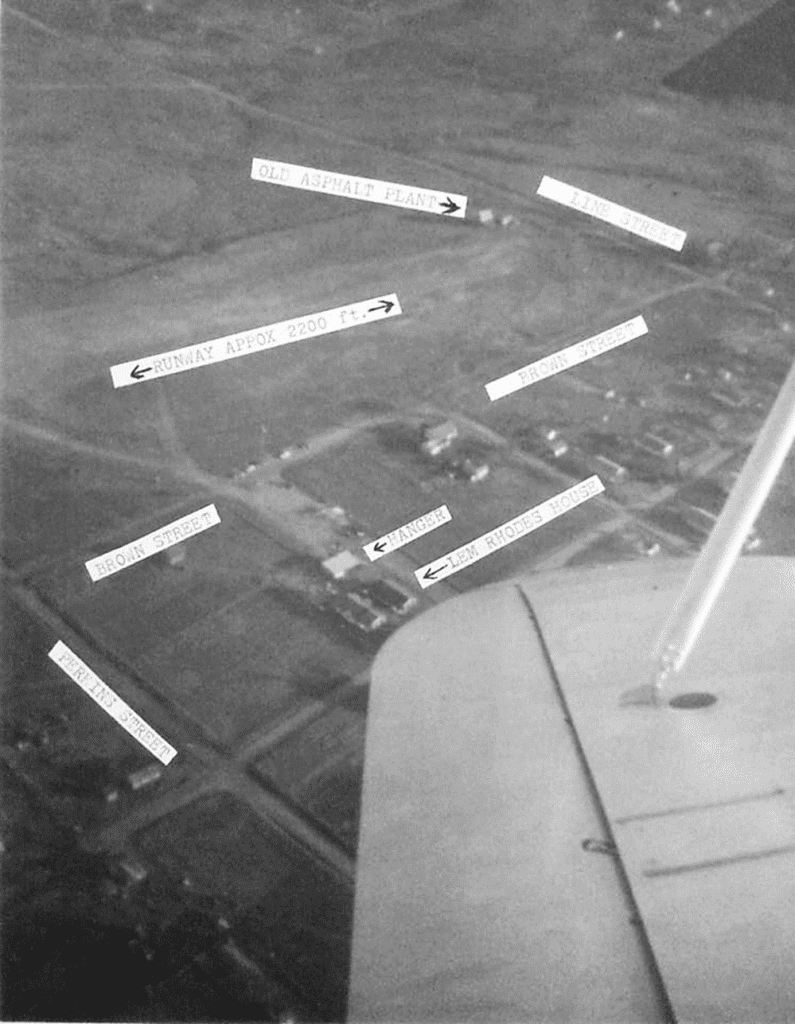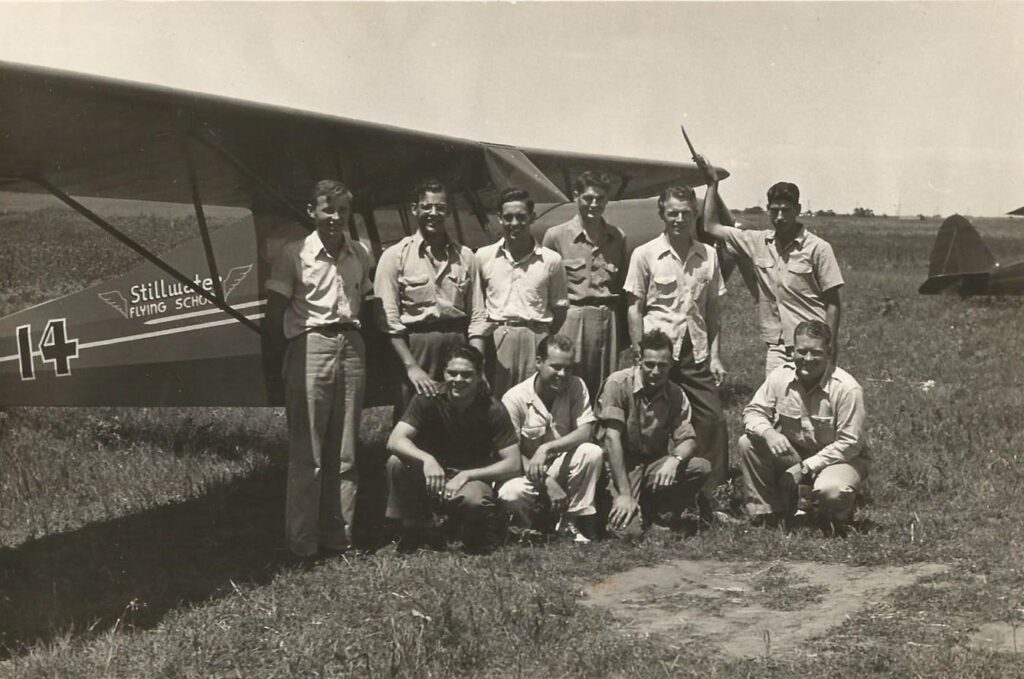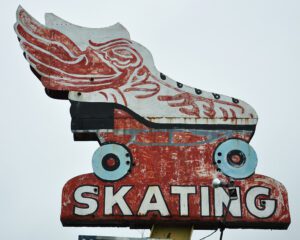During the 1920s and 1930s, interest in aviation soared as technology rapidly advanced and as events such as Charles Lindberg’s transatlantic flight in the “Spirit of St. Louis” captured the imagination of the American public.
Sapulpa was no exception, and in 1928, municipal leaders decided to convert the old Fair Grounds and Horse Race Track into an airfield. The cement footing for the old grandstand had to be removed and the horse barn was torn down and relocated.
The 80-acre tract of land was then utilized by the Sapulpa Street Department. Horses, mules, wagons, and other equipment were housed there. Moving the barn and leveling the old race track provided local fliers a passable airfield.

Ed Billing went before the City Council on July 19th, 1928, to obtain permission to construct a hangar for the new plane he and his partners, B.C. Stivers, Ovid Stivers, and Charlie Odell were going to buy.
The plane, an O.X. 5 Swallow was manufactured by E.M Laird Aircraft of Wichita, Kansas. The plane was named “Miss Lorraine” for B.C. Stivers’ daughter.
Wallace Bodkins, the pilot who flew the plane to Sapulpa, briefly remained in Sapulpa to give flying lessons before Larry Holsinger was hired as the flight instructor.
An ad was placed in the County Democrat-News later that year, inviting people to take flying lessons. So many people responded to the ad that another engine was purchased for the plane to reduce “downtime” due to overhauling the engine in the plane. John Williams and Bob Todd were the mechanics who serviced the aircraft.

A second plane, a Thomas Morris Scout, was purchased, however, the craft met an early end. One morning, a few days later, the instructor didn’t arrive at the field as early as one of his students, a young lad named Irvin McClung. McClung fired up the Scout and was going to taxi around the field. Once he started back up the field, the plane became airborne. Irvin flew around for a while, then attempted to land. After three attempts to land the plane, he crashed. His injuries required hospitalization, but he felt lucky to be alive. The Scout, however, was completely destroyed.
The Sapulpa Flying Service acquired a third plane, a practically new Waco 10 with an 0X5 engine. Art Lawson and Vernon Tarpley bought the plane and brought it to Sapulpa. Art and Vernon kept the plane in Lem Rhode’s yard for a brief period of time, then moved it to the single-plane hangar after the Swallow crashed.
Plane number one shortly met the same fate as plane number two. The Sheriff had a prisoner he didn’t want to transport by car, because he was afraid that the prisoner’s friends might seek to rescue him. Therefore, he decided to fly the prisoner to prison in Mcalester. The Sheriff, the prisoner, and the pilot took off for “Big Mac.” But the prisoner grabbed the rudder when the plane had reached an altitude of approximately 75 feet at Line and Hodge Streets. The plane crashed in a vacant lot just north of a barn at 404 N. Hodge. Although there were no injuries, the aircraft sustained serious damage and was hauled to John Williams and Bob Todd’s garage.
A flying circus came to town on May 18, 1930, and Art Lawson was hauling passengers in his plane. An elderly man, named John Toney, who lived near the airport, decided to cut across the field and walked right into the prop of Art’s plane, killing Mr. Toney instantly. This was so traumatic that Lawson didn’t fly for a long time. He later sold his plane, leaving Sapulpa without an airplane.
In 1939, Olen Wilbourn, Lem Rhodes, and Earl Shipman brought in a long nose 0X5 American Eagle, which was plane number four. Alex “POP” Allen gave the trio flying lessons, and Lem Rhodes soloed after only 29 hours.
Lem Rhodes, Al Guthrie, and Clyde Kirby all became pilots. Al and Clyde flew professionally. In fact, Al became an acrobatic pilot, wrote a book on flight instruction, started a civilian pilot program, and later, became the owner of Guthrie Aviation in Oklahoma City.

Plane number five was a Velie Monocoupe bought by Wilbourn. He quickly tired of this plane and sold it to Jack Beindorf. Olen then purchased plane number six, a Travel Air 2000 OX5.
The famous Western Swing musician, Bob Wills owned a large three-engine plane that made an emergency landing in Sapulpa and stayed until the craft was repaired.
Security regulations during World War II required that all aircraft have 24-hour armed guards, resulting in planes being moved to Tulsa and many owners selling their planes.
For the next several years, the Sapulpa airport lay dormant. After the war, there was a renewed interest in flying; the public was enamored with the bombers and fighters they had seen in countless newsreels.
Veterans could use their G.I. benefits to take flying lessons and become “part of the American dream.” A group of men bought some surplus trainer aircraft to start a flight training school.
The fields never were in pristine condition and in the early 1950s, the Aviation Committee of the Chamber of Commerce, headed by Don McMasters, sought to raise money to improve the fields and structures, bringing the airport up to national standards. Sadly, the fund-raising effort failed, and by the mid-1950s the airport closed and houses were built on the land.










